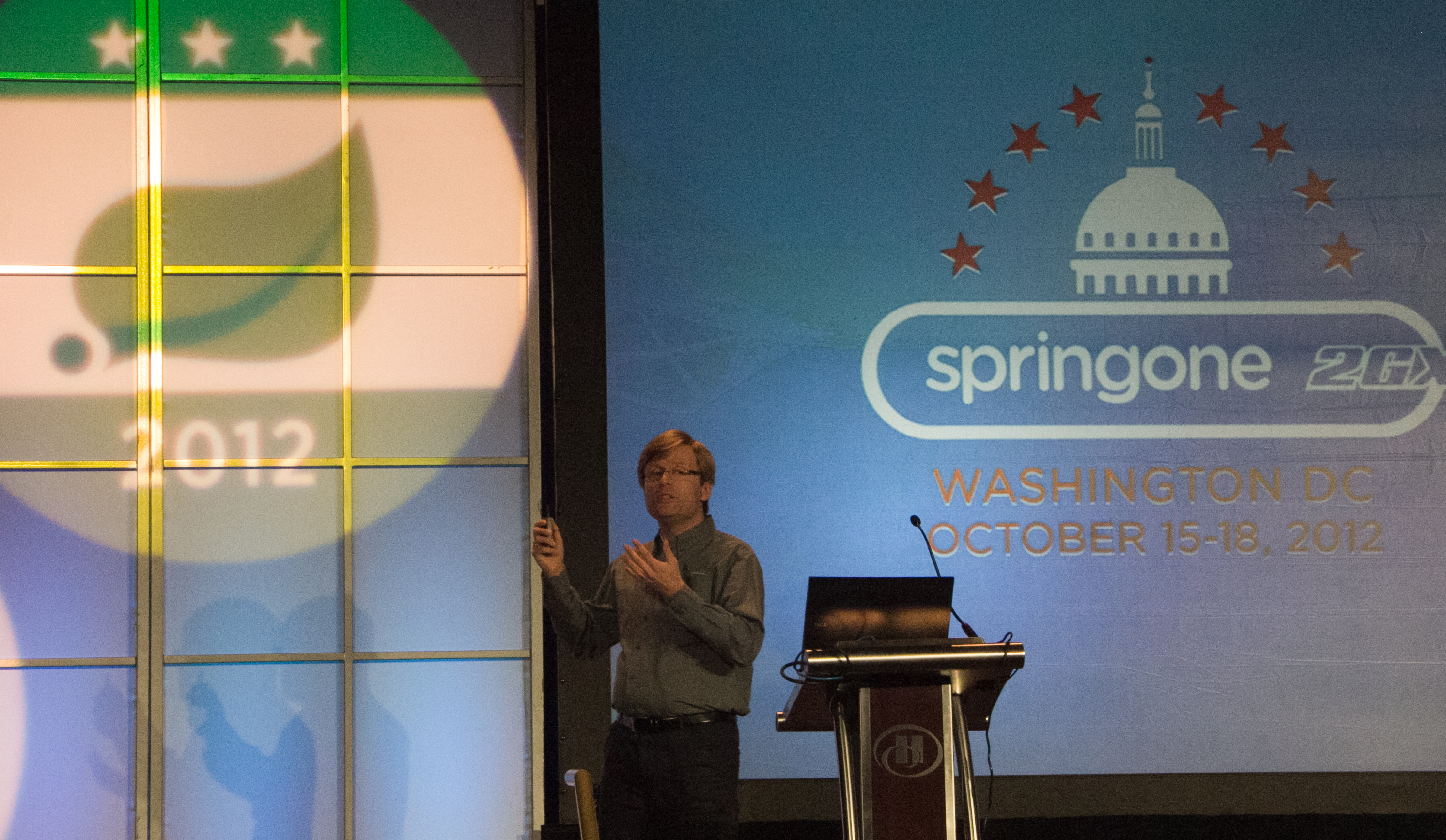Welcome to This Week in Spring, SpringOne2GX 2012 edition! I'm putting this together from day 2 of the SpringOne2GX conference in Washington D.C.!
Last night, we kicked off the event with a great keynote by Juergen Hoeller (pictured above), Dr. Mark Pollack, Graeme Rocher, and Adrian Colyer, some amazing break dancing by international dancer Agame, and a mysterious kangaroo (see below)!
This is the premier event for JVM developers, featuring great speakers from VMWare, SpringSource, TypeSafe, Neo4j, and many others speaking on all manner of topics. The week is just kicking off. While the conference is running, there's also going to be a contest to find the best applications built using SpringSource technologies (Spring, Grails) and deployed to Cloud Foundry. I've seen the prizes (above), and I would enter too if I could!
<P> If you're at the show, be sure to stop by the SpringSource and Cloud Foundry booths in the expo hall and pick up shwag and answers to your lingering questions. I'll be there tomorrow, in the evening.</p><P> Anyway, I won't linger <EM>too</EM> much on what you're missing! Let's move on to this week's roundup because, as usual, there's a lot to cover! </p>
<OL>
<LI>Want to learn about what else has happened at SpringOne2GX? Check <a href= "http://www.springsource.org/node/3704">out this fantastic wrap up of day 1</a></LI>
<LI> The Spring Data release train has finally arrived…








